How to buy your first road bike
Our guide to navigating all the different options when buying your first road bike.

Oliver Bridgewood
GCN Tech Presenter
PhD Chemist turned cycling enthusiast, bringing the lab coat to GCN Does Science
You've decided to buy a road bike. Great! Here's all the things to look for when picking out your new steed. Because, while anyone can walk into a bike shop and point at something bike shaped, it takes a little bit of know-how to choose the best bike for your budget.
We’ve broken down the different options you should look out for, so you can understand the differences, and buy the right bike for you.
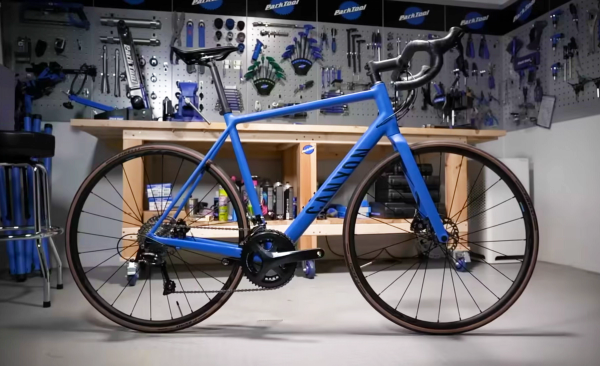
How much should you spend?
If you’ve spent any time browsing options, you'll have noticed that you really can spend as much or as little as you like on a road bike. So what kind of figure is right for a first road bike?
If you want an in-depth understanding of how much to spend, read our guide to the different price brackets of road bikes, where we explain what you should expect at each price point.
In short though, if you’re after a brand new bike, we’d suggest budgeting at least £500/$650/€550. If that’s already out of your budget, you’re better off looking for a second hand bike, where you’ll get a much better bike for a much better price.
Have a look at our tips for buying a second hand bike.
However much you’ve budgeted for a bike, it’s important that you don’t spend all of it on the bike alone. Most of the time, you'll need to swap the saddle out for one that's more comfortable, plus you'll need to budget for a helmet and maybe a pair of cycling shorts.
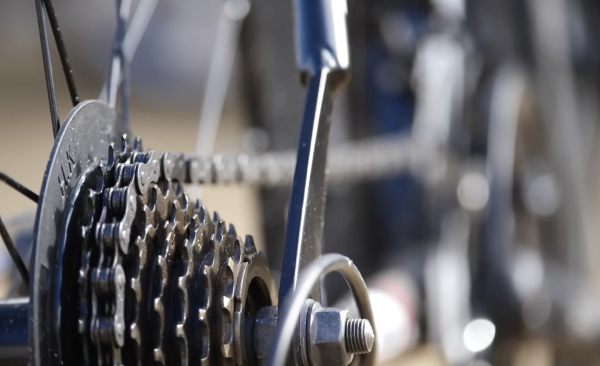
How to choose gears
You’ll come across all kinds of different gearing set-ups when browsing bikes, and it can seem like there are a million different options. And, well, there are. With so many options out there, it can be tricky to make sense of it all. But really, getting this right is pretty simple:
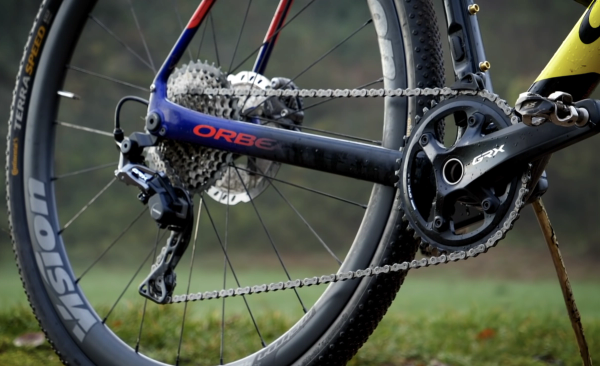
How to spot high quality parts
First of all, keep an eye on named brands. The biggest (and best) component manufacturers are Shimano, SRAM and Campagnolo. If you’re looking at a bike with any of those brands stamped on the gears or brakes, the chances are they’ll be good quality.
Each of these manufacturers produces different ‘models’ of gears and brakes, at varying quality and price brackets, so they can address different price points for customers. Usually, an entry level bike will be equipped with one of the lower grade models, but don’t worry. If they’re made by these brands, they’ll still perform well out on the road.
Low-end components will have seven to nine gears on the rear cog (collectively referred to as the cassette). This is a good starting point – you’ll still have a big range of gears. But with fewer gears on the back, the gaps between each gear might be quite large. And with these lower-end parts, the gear changes might feel a bit more clunky.
Higher-end parts have at least 10 gears on the cassette. This is a pretty good indicator that the components on the bike are high quality, with precise manufacturing and well-designed parts.

Getting a good range of gears
However many gears a bike has, have a look at the size of the biggest cog. Ideally, you should get a bike with a 32 tooth cog on the back. This large rear cog means that you can ride at a higher cadence at low speeds. You’ll be able to spin your legs more when climbing, and it’ll just make hills that bit easier.
The front cogs are collectively referred to as the chainset. Some bikes have one front cog, some have two, and some have three. But to start with, look for a bike with two front chainrings. It’ll give you a good spread of gears, without being too heavy and complicated.
A compact chainset – which has 50 teeth on the big ring and 34 on the small ring – is the best option for new riders. Like that big rear cog, it’ll give you a low enough gear to spin up any climb that you find yourself on.
Put simply, if you're a beginner to road cycling and you're wanting gears that are going to help you get up hills, you want bigger ones on the back and smaller ones on the front.
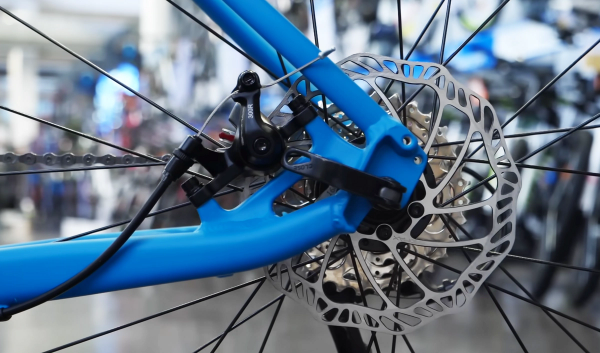
Brakes
When it comes to road bike brakes, essentially, you’ve got two choices: rim brakes or disk brakes.
Disc brakes cost a little bit more than rim brakes, but if you live or ride in a hilly area, or plan on riding in wet weather, we think that they're worth the extra outlay. This is because they offer substantially more powerful braking that's more consistent and more controlled, especially in the wet.
Rim brakes are good too, though. In fact, many cyclists prefer rim brakes. They're much easier to maintain at home, replacement brake pads are a lot cheaper, and they're a little bit lighter than disc brakes.
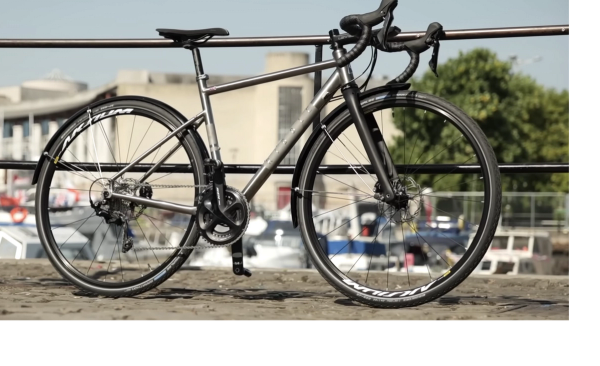
Frame material
The material that the frame is made from has a massive impact on the overall ride quality of the bike. The most common materials are aluminium, carbon fibre and steel. Of these three, aluminium is by far the most common. It’s a light, versatile material with a fantastic strength to weight ratio and good corrosion resistance. So naturally, it's the first choice for bike manufacturers. If you’re shopping in the lower end of the market, you’ll see that almost every bike is made from aluminium.
Once you enter the mid-range, you start to see entry-level carbon fibre bikes. Carbon fibre is typically lighter and stiffer than aluminium and steel, making for better ride quality. But if your budget doesn’t stretch that far, don’t worry. The material of your bike won’t hold you back.
A good halfway house between carbon and aluminium is an aluminium bike with a carbon fibre fork. This reduces a bit of weight, it makes the fork much stiffer and also reduces road vibration and buzz through the handlebars.
These days, steel is a relatively niche material for bike frames. It’s heavier than aluminium and carbon, but some riders prefer it, both for its rich cycling heritage, and for its (anecdotally evidenced) smoother ride.
Whatever frame material you go for, make sure you buy it from a reputable brand. That way you'll know the frame has been properly designed and tested, and it’ll come with a solid warranty.

Frame features
Look out for bikes with lots of tyre clearance, meaning there’s room in the frame to fit wider tyres. This gives you the opportunity to put some wider tyres on your bike so you can stray off-road.
Keep your eyes peeled too for frames with lots of mounting points, as these allow you to attach things like mudguards/fenders and pannier racks – super useful for commuting or touring.
A final detail to watch out for on the frame is the bottom bracket type. The bottom bracket is the bearing that the chainset turns around. Any bike that has outboard bearings with a threaded bottom bracket gets bonus marks in our book, as these tend to require less maintenance and last longer. To spot this, look out for metal cups sitting next to the frame.

Wheels
You probably won’t be too surprised to learn that entry-level bikes come with entry-level wheels. But something you might not know is that mid-level bikes often come with entry-level wheels too.
This is because many riders choose to upgrade their wheels down the line, when they get more into the sport. They'll typically swap them for something that's lighter, stiffer, and perhaps more aerodynamic. But with these improved performance areas on the wheel comes increased cost and that's why, to keep the overall price down, lots of bikes come with a more basic wheel.
The main thing to look for in stock wheels is durability. Sealed bearings keep dirt and grime out of the hub of the wheel, which will mean they roll smoother for longer, and a higher spoke count usually means higher strength.

Saddle comfort
Road bike saddles are designed to be used with padded shorts which means it's normal for them to feel uncomfortable without padded shorts. They should never be painful though.
Saddle comfort is very personal so it's normal for riders to swap in something that better suits their preference. Remember to consider the cost of a new saddle when budgeting for your bike.
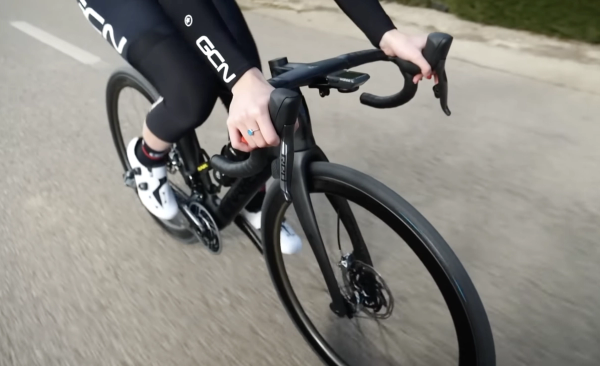
Women's-specific bikes
You can get women's specific bikes. These tend to have the same frame but different contact points to account for the anatomical differences between the sexes, so you'll get a specific women's saddle, a slightly shorter stem, narrower bars and slightly shorter cranks. But this isn't necessarily essential – it depends on your proportions. We suggest you go for whatever is most comfortable for you.
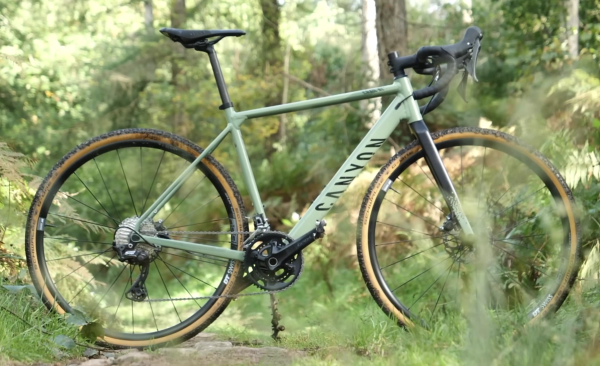
Gravel bikes
You may be interested in gravel or mixed surface bikes. These are essentially road bikes with a few modifications to make them more versatile, so you’ll find increased tyre clearance, bigger volume off-road tyres, easier gears for climbing super steep hills, and disc brakes.
The end result is a bike that’s capable of going on gravel tracks or bridleways, but is much quicker than a mountain bike.
This versatility means they're ideal for people who want to use their bike to ride on a mix of different surfaces, whether you’re a commuter who wants to stray off road every once in a while, or a budding bikepacker.
The best part about a gravel bike is that, by swapping out the knobbly tyres for some skinny, slick road tyres, you essentially end up with a road bike. This versatility makes them a fantastic option for a first bike.








